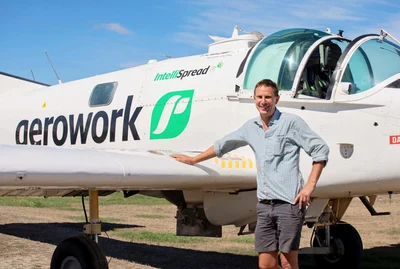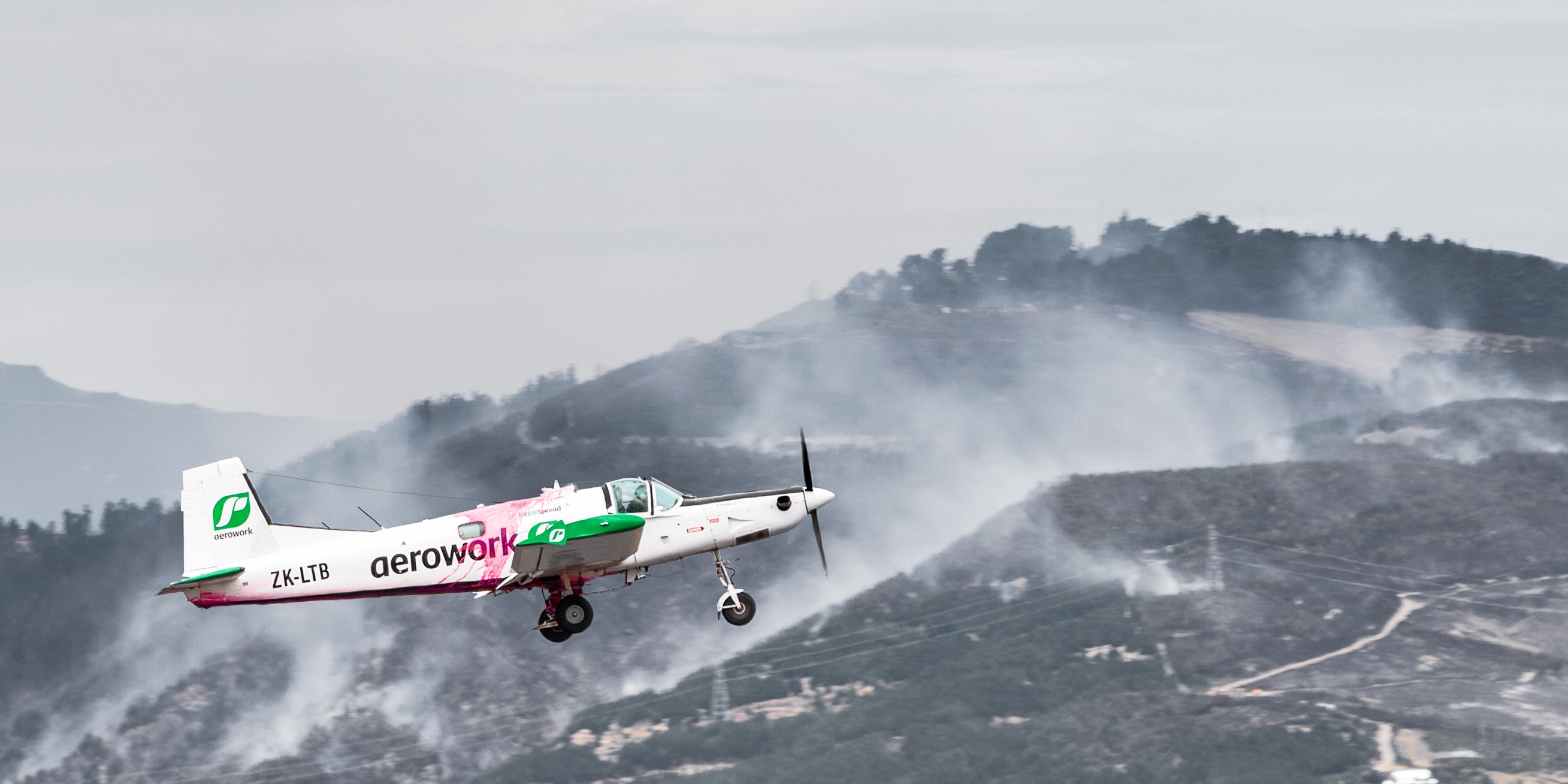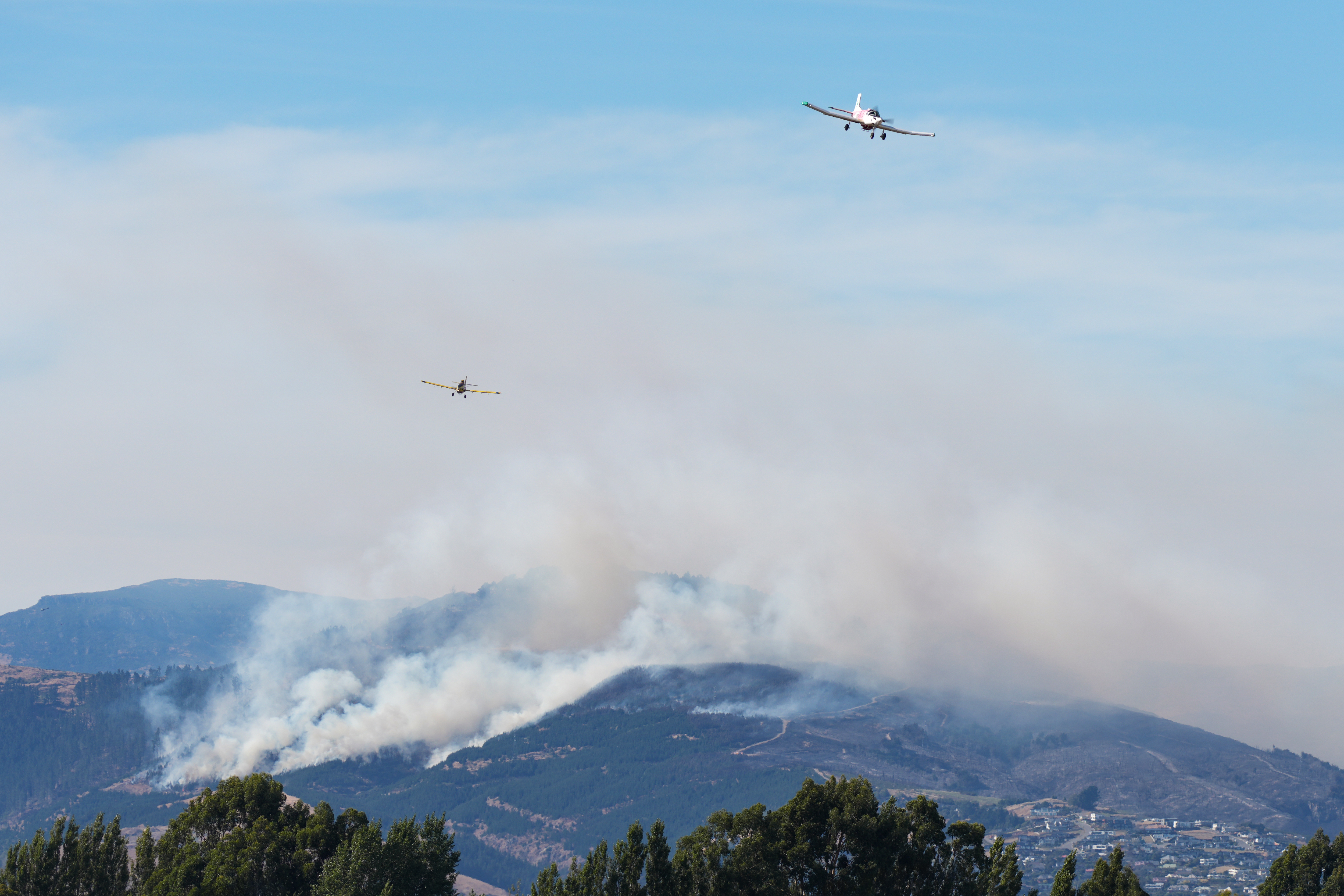Flying low

Top-dressing pilots are known for their prowess in the air, and Ravensdown Aerowork pilot David Evans, with thirty years of experience in the cockpit, is one of New Zealand's best.
With low-altitude flying and the need to be able to land planes in some dubious places, top dressing remains one of the most challenging jobs in the agriculture industry, but Evans's experience means he is adept at handling risky situations.
"The element of risk is always there, but we try our best to mitigate risk and come home," Evans says.
"People look for thrills in life, but we don't need to do that because we are flying low level and we are fast all the time.
"It's a bit like being a racing car driver."
Evans is a second-generation top-dressing pilot. His late father, Bruce, worked for top-dressing pioneer Peter Rowley, who started his business in the 1950s using a Tiger Moth.
Evans hadn't considered a career in the agricultural aviation industry until fate intervened shortly after he finished high school when his father's loader driver broke his arm.
"It was around 1990, and I ended up driving the loader for him, and that's where it all began."
Evans began his pilot training through the Canterbury Aero Club, paying his tuition fees with funds from his work as a loader driver.
"It all happened when I was on the truck and earning enough money to do it.
"I did all my exams and study sitting in the loader."
Once Evans gained his licence, he began flying the top-dressing plane to and from home.
"I gained a lot of experience that way.
"I landed and took off from most of the airstrips we were going to work off, so it was a good grounding for top-dressing."
In 1994, Rowley sold the business to Evans' parents, and Evans's father decided it was time for his son to move on from loader driving.
"I drove the truck to a job in the gorge one day and thought it was a bit odd that my Dad turned up with his brother Wyllie, and Dad chucked Wyllie in the loader and said you might as well jump in the plane and do a couple of loads."
Evans describes his father as a good flight instructor.
"My Dad taught me how to top dress.
"He had obviously done a lot of flying with me and could see my capabilities."
Evans went on to gain his commercial licence, a requirement for top dressing pilots, and his agricultural rating.
"Any revenue-earning job requires a commercial licence, and we have to do an agricultural rating, which is quite specialised in that it's low–level. Being low and fast means there are a lot of hazards and wires that you have to deal with.
"You've got birds and wildlife screaming at you."
On top of the hazards, Evans said it's important to spread the fertiliser accurately and at the correct rate so farmers get the maximum benefit from their investment.
"When I started, there wasn't GPS, and now there is, so that helps a lot."
After Evan's father passed away, Evans took a brief break from top dressing before taking up the job for Aerowork, a division of Ravensdown, in 2019.
"Ravensdown has spent a lot of money developing its spreaders and variable rate application, and that progresses as time goes on."
Evans flies a Cresco 750 horsepower plane, which was built in 1998 in Hamilton by Pacific Aerospace Corporation. The plane is well suited to top dressing and New Zealand conditions, Evans said.
"It's really powerful and carries two tonnes.
"It's suited to flying in New Zealand because of its layout, undercarriage, and ease of flying, whereas many planes are coming in that are much heavier and harder to handle in windy conditions."
With top-dressing planes becoming hard to get and with a high price tag, the focus remains on maintaining Ravensdown's fleet of seven planes, three of which reside on the South Island.
"They rebuild the planes every four years, and they come out as good as new."

The plane and Evans' flying skills took centre stage recently when he was called up to help fight the Port Hills fires near Christchurch.
Over two days, Evans and one other fixed-wing pilot dropped fire retardant over the flames, work which Evans said the Cresco is well suited for.
"Fixed wing is quite punchy, we can drop two tonne of water and get rid of it in seconds, so it has quite a good effect."
"We have always had the ability to fight fires, but nowadays they bring in helicopters, whereas before aeroplanes did it all."
Evans said it's disappointing that helicopters are chosen over fixed-wing machines for fire-fighting when top-dressing pilots are skilled at flying in difficult conditions with quick turnarounds.

"As our daily job, we can be working multiple planes together, and we minimise our risk so we aren't running into each other.
Evans said he enjoyed the challenge of fighting the fires and the camaraderie between volunteer firefighters and the pilots.
"It was quite good being so visible with the fires because normally we are out the back, and no one sees what we do.
"It's good to come out of it thinking we've done some good."
Evans says he enjoys challenge and variation within top-dressing.
"We are very lucky; our job changes every day.
"You are at a new block, working for a new farmer, and all the hazards go with it so it keeps you engaged.
"I enjoy seeing the results of what we do, and farmers are generally quite appreciative because, obviously, we are quite important to their livelihood."
by Claire Inkson

